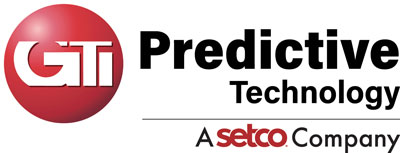For all manufacturers, preventing breakdowns is essential to minimize downtime and reduce expensive repair costs. In recent years, technologies like the Industrial Internet of Things (IIoT), big data analytics, and cloud storage have moved from the realm of science-fiction to near ubiquity on the production line. These technologies allow vehicles, industrial equipment, and assembly robots to send condition-based data to centralized servers. This allows for easier fault detection and replacing reactive maintenance programs with predictive maintenance programs. It’s undeniable that the future of predictive maintenance technology is looking bright with an estimated annual growth rate of 24.5 percent, but some manufacturing professionals might be wondering what the role of human workers is in this digital future.
A Good Predictive Maintenance Program Requires Strategy
Without taking the time to carefully plan your predictive maintenance program it is nearly impossible to achieve desired results. One manufacturer might decide to increase output, whereas another could optimize their program to minimize equipment wear. Once you establish a goal you need to determine which machines to collect data from. The data required can vary depending on the type of machine. Temperature, ultrasound, and vibration data, or a combination of any of these inputs, can provide valuable insights. A well-run predictive maintenance program will carefully determine how data will be collected and how often. A proper strategy will ensure your staff is only collecting data that is relevant to the machines you are monitoring and the goals you’ve established.
Machine Learning Programs are Only as Good as the Data They’re Given
While much has been said, and written, about the value that machine learning programs bring to predictive maintenance, it’s important to keep in mind that these tools are only as good as the data that’s given to them. When predictive maintenance programs first begin, there often isn’t enough data available to determine when breakdowns will occur. However, a well-trained staff can simulate failure data and teach the programs to recognize warning signs. When starting a predictive maintenance program, it’s essential to think through the data collection sources and fill in any holes that might be missing. Once a predictive maintenance program is up and running it’s possible for the machine learning algorithms to detect potentially fatal anomalies months before a breakdown.
Do More with Less
While machine maintenance programs used to require routine manual inspections to prevent critical equipment from breaking down, predictive maintenance programs are minimizing redundancies. This helps prevent plant technicians from inspecting a piece of equipment that’s in perfect working order. However, that doesn’t mean all repairs and inspections will stop, it just means that we’re getting smarter about doing them. Technicians can better prioritize inspections of higher-risk equipment and become up to eight times as productive. With enough data collected and strategic inspections performed, manufacturers can eventually achieve zero unplanned maintenance – a goal the U.S. Defense Department announced with the implementation of IoT devices and predictive maintenance software on many of its combat fleets.
To learn how you can implement a predictive maintenance program, contact the professionals at VibePro today.
About VibePro
At VibePro, it is our mission to provide the best predictive tools on a single iPad platform with services to monitor nearly any asset. We strive to bring our customers the portability, connectivity, and affordability offered by the latest available technologies. Our product family combines wireless portable and online vibration data collection and analysis, balancing, shaft alignment, thermography, and ultrasound into an affordable and completely scalable solution on one simple to use platform. VibePro’s predictive technology apps feature many additions that have come directly from customers. Click here to learn more.
